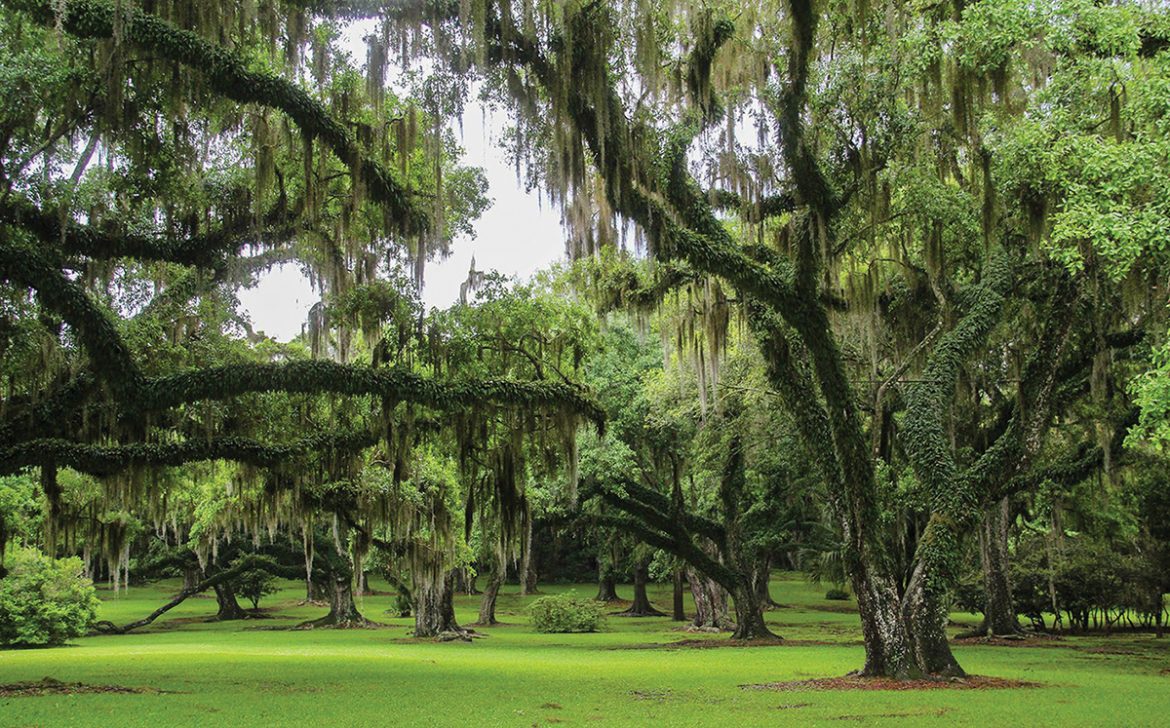Probably no other plant more epitomizes the Deep South and the Southern way of life than Spanish moss. Movies, television shows and artworks depicting the South almost always show stereotypical live oak trees festooned with the wispy gray plant that blankets hardwood forests and swamps from East Texas across Mississippi to Southeastern Virginia.
Centuries ago, the plant contributed to tensions between competing European colonial powers on the Gulf Coast. The plant reminded Frenchmen of long, flowing gray beards worn by Spaniards. They called it Barbe Espagnol, or “Spanish Beard.” Highly insulted, the Spanish retaliated by naming the plant Cabello Frances or “French Hair.” In the end, the French somewhat prevailed in this competition and the “Spanish” part stuck.
We’ve established that the plant is not “Spanish,” but it’s not a moss either. It is an epiphyte, or air plant, with the scientific name of tillandsia usneoides of the family of Bromeliaceae, or a bromeliad. It is most closely related to orchids and, oddly enough, pineapples, the only species of the pineapple family indigenous to the continental United States. Not usually thought of as a flowering plant, it does grow small leaves and inconspicuous yellow flowers and even bears a tiny capsule-like fruit that somewhat resembles a minuscule pineapple.
With stands like octopus tentacles, it wraps itself around suitable tree branches. Contrary to popular belief, Spanish moss is not parasitic to trees. The plant absorbs necessary moisture directly from the air through scales in its “stem.” It gets nothing from trees, except a sturdy place to hang out.
Because it gets nourishment directly from the air, it needs a strong host, sunlight, moisture and clean air to survive. Spanish moss cannot tolerate airborne contaminants. Automobile exhaust fumes can kill it. Therefore, increasing pollution and urbanization reduced the abundance of this rather delicate plant across much of the South.
Contrary to another idea, Spanish moss repels bugs. Therefore, the fibers make excellent stuffing material for mattresses and upholstered furniture. Since the early 18th century, moss gatherers scoured the swamps and forests of Mississippi and elsewhere in the Deep South to harvest large quantities of the plant to feed first the European and then the American mattress and furniture industries.
Usually, standing in flat-bottomed boats, the moss gatherers used long rake-like poles to pull the gray clumps from tall oak and cypress trees. These hearty people baled their “catch” into great heaps and transported the haul by boat or wagon to processing gins. The gins turned the gray-scaled strands into black fibers similar to horsehair. Some of the best furniture in stately old homes still contains this symbol of the South.
The moss gathering industry and its relationship to the upholstery industry persisted until just a few decades ago. After World War II, cheap new synthetic fibers and foams replaced natural materials. By that time also, much of the vast, remote wilderness where the moss thrives largely vanished. By the 1950s, few people still made a living gathering or ginning moss.
However, the tradition didn’t entirely disappear. While few people still fill furniture with moss fibers, some still gather small quantities of the plant. Most of this harvest goes into making small novelty items, handicrafts and decorations sold in hobby or craft stores, making this incredible plant still the stuff of the South!





